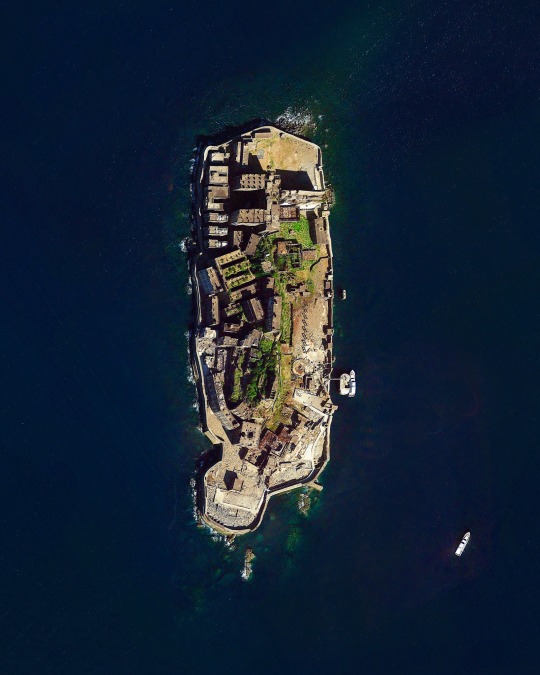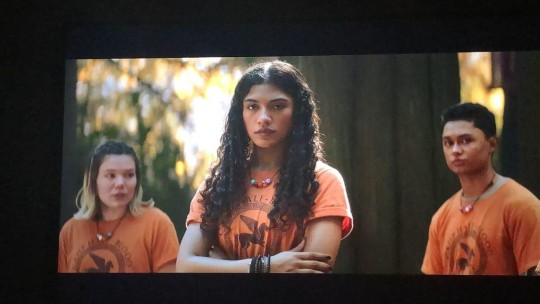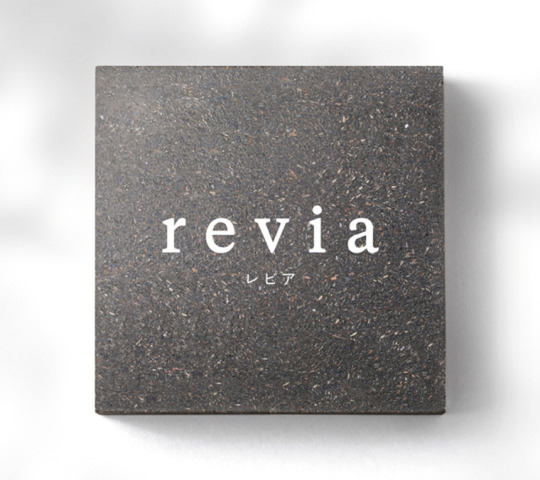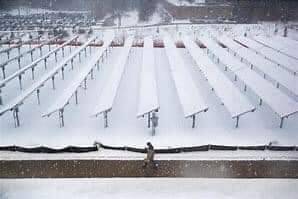#petroleum building
Explore tagged Tumblr posts
Text

Petroleum Building, Casper, Wyoming
#my own photo#architecture#petroleum building#modern architecture#mid century modern architecture#international style#casper#casper wyoming#wyoming#usa#united states of america
5 notes
·
View notes
Text
god now I’m imagining that the philosopher's stone smells not dissimilarly to Red Loctite
You know whats weird? A lot of alchemical texts say that the philosophers stone smells good. Especially the texts that describe it as a red powder. They say it has a powerful, pleasant aroma. Not really sure why that is.
#red loctite has that characteristic petroleum smell and tastes like artificial strawberries#and if you want to know why i know this#well#allowing teenagers to build robots on nasa property with very little oversite leads to incredible experiments and culinary advances#like eating pizza without washing the loctite off your hands
6K notes
·
View notes
Text
What is your Career like?👩🏻💻💼💰💸
The 10th ruler in your chart can indicate your career but it is not the only factor. However, the house placement of 10th lord/ruler can indicate at times the type of career you desire and also can indicate your job literally.
1st House : You will do well in careers which gives you a certain amount of independence. You can be an entrepreneur or a boss or a team leader. Authority and power are essential for you.
2nd House : You will do well in careers which pays you well. You can be good with numbers, finances and any responsible/routine job. Careers that depend on your appearance like modelling are good. Your job would need a good self esteem and self worth.
3rd House: You will do well in careers that involve mobility, communication, writing such as YouTube. Freedom of expression, and movement is important to you. You should be able to experiment as you wish. Change of careers as times change
4th House: You will do well in careers that gives you emotional satisfaction such as nursing, psychology. making an impact on people’s lives is important to you. Working from home can be good.
5th House: You will do well in careers that allow your self expression such as art, acting . Careers connected to children and transfer of knowledge are good. A career in which you are a genius and unique such as music, painting, investor.
6th House : You will do well in careers that allow you to maintain order such as backend work. Routine and a stable job is important to you. You may also do well in health , healing and animal careers.
7th House : You will do well in careers that allow you to exchange things whether product or service. You will do will in public careers like politics. Business is good as well as client based careers. You will do well in careers that allow you to work with another person.
8th House : You will do well in careers that allow you to research things like a biomedical or chemical engineer. Careers in digging like oil petroleum or digging another’s finances as auditing, insurance are good. Investigation and finding secrets. Psychology, medicine , surgery are good choices.
9th House : You will do well in careers that allow you to reach a wider audience around the globe such as publishing books, writing, online teaching, academia. A sense of meaning and purpose is important in your job.
10th House: You will do well in careers that allow you to be skilled and efficient in what you do. A generally good position for executive and managerial jobs or Government routine jobs
11th House: You will do well in careers that allow you to build your network such as social media manager, politics, businesses, digital marketing etc.
12th House : You will do well in careers that heal people and raise their consciousness. Careers in spirituality, metaphysics, non-profit work would be good for you. You need freedom and a flexible schedule.
For Readings DM
#astrology#astrology observations#zodiac#zodiac signs#astro community#astro observations#vedic astrology#astro notes#vedic astro notes#astrology community#10th lord#10th house#career in astrology
1K notes
·
View notes
Text

Hashima is a small abandoned island about 9.3 miles (15 km) off the coast of Nagasaki, Japan. The island was continuously inhabited from 1887 to 1974 as a seabed coal mining facility, with a peak population of 5,259 in 1959. However, as petroleum began replacing coal in Japan in the 1960s, the mine was closed and cleared of inhabitants. Its abandoned concrete buildings, undisturbed except by nature, and surrounding seawall make the island an eerie, yet popular, tourist destination.
32.627778°, 129.738333°
Source imagery: Maxar
309 notes
·
View notes
Text
Blessed be the asteroid that fragmented itself and formed the meteor that fell on the prehistoric earth, decimating the animals that went on to become fossils and then petroleum that was extracted and used to manufacture the fuel that supplied the machines used to build the hospital in which Dior Goodjohn was born.

#percy jackon and the olympians#clarisse la rue#clarisse la rue x reader#clarisse pjo#percy jackson#pjo tv show#pjo series#percy jackson finale#dior goodjohn#clarisse x reader
624 notes
·
View notes
Text
honestly for as radical as 'how to blow up a pipeline' is it really cannot conceive of organised action.
the arguments the characters have are arguments between incrementalism and adventurism, and every time a character says 'this might be impressive and flashy but it doesn't actually do anything' the only rebuttal they have is the propaganda of the deed; of a never-before-seen type of spontaneous mass action spurred on by people Seeing That It's Possible. ultimately both sides are making arguments that are 'within the system' - the stated endgame for the activists is that widespread terrorism makes specifically petroleum unappealing to the capitalist market. that is as much of a solution as the mythological reform is, and is ultimately underpinned by the exact logic of 'raising awareness' as the positions they critique - positions they critique specifically for their *speed*, not for the fact that they are impossible.
the driver of climate destruction is capitalism, not any given resource. without a support network; without connections to the labour movement which can exert ultimate power, and bring the economy to a halt unless its demands are met; without a fighting organisation built from the support of the people; without bail funds and legal support; the only hope is that you can Make A Statement when you get imprisoned, and that, with no support from the outside, nobody ever talks.
if you want to destroy a system, then follow the example of the millions who have succeeded at that before you, learn from their experiences, and build a movement that creates guerrillas and victorious revolutionaries, instead of martyring lone terrorists
573 notes
·
View notes
Text

Where the Angels Walk
Author: LoversAntiquities | Artist: szlez
Posting on Monday March 17
Sam is missing, and the only person that Dean can think to run to—halfway across the country—is Castiel, a detective now employed by the Los Angeles Police Department. But Sam's disappearance isn't a result of him running off into the sunset, unlike Castiel thinks. Dean heads to Los Angeles on a hunch, hoping that Castiel can use his connections to find where Sam might be—only, the rot runs deep within the department, and what starts off as a garden variety break-in turns out to be something that if provoked, could get both Dean and Castiel killed, and end with Sam becoming the head of an organization neither of them even knew existed. But, how can Dean stop what feels inevitable before it even starts?
Keep reading for a sneak preview!
Looking at the wound, maybe Castiel was right—maybe he does need a hospital after all. Small caliber or not, Castiel bleeds like a faucet, and only after a good thirty minutes of continuous pressure and towels and numerous prayers to a god that may or may not exist, does Dean manage to stem the flow. After that—after that, he has no clue what to do.
“My—my old man got shot once,” Dean mentions after he returns from the motel parking lot, a first aid kit in hand. Castiel sits on the edge of his bed, shirtless, with blood staining the left half of his torso and down the leg of his slacks. Dean doesn’t look at him—tries hard to not look at him, but he can’t help but admire his build, the firmness of his core and biceps, his forearms. Two nickel-sized scars decorate his opposite shoulder, barely an inch between them and silvered from age. He aches to touch them, to see what they might feel like under the pad of his thumb.
Whether or not Castiel notices him staring, he doesn’t let it show. “How did it happen?”
Right, words. “He—someone was hunting on our land, once, least that’s what he said. I was a kid.” Dean sits on Castiel’s bad side and urges him to lift his legs onto the mattress and turn. With shaking hands, he pops open the kit in his lap, the contents half used, but still with enough gauze and bandages to make do for the time being. “Walked in, sat down at the table, wouldn't let my mom touch him. Said he could take care of it himself.” Blood drips; Dean dries the wound with a red-stained rag. “Almost lost his damn leg.”
Castiel hums, then sighs. “I’m sorry.”
“Not your fault.” Dean takes a few packages of gauze and a small tub of petroleum jelly from the box, setting the box aside. “You gonna let me in on your charade, now?”
Castiel straightens up, tensing under Dean’s hand as Dean covers the wound in a thin sheen of wax. “You should’ve taken me to the hospital.”
“I told you, no.” Dean barely holds back from jamming the gauze onto Castiel’s shoulder out of spite. Hurting him won’t solve his problems, and probably won’t get him any answers any faster. “Whoever shot you could be at any hospital in the city, waiting to finish the job. And if you’re dead, who’m I gonna bitch at?”
Low, Castiel lets out a noise Dean could almost call a laugh. “You’ll hate me.”
“Not telling me’s gonna make me hate you more.” He tapes down the gauze with two Band-aids and, the rest of his tools in hand, crawls around Castiel, coming to sit in front of him. Visibly reluctant, Castiel shifts around, letting Dean have access to the exit wound marring his shoulder, red and swollen and slightly larger than the entry hole. Dabbing away the excess blood, he asks, “You sure it doesn’t hurt?”
“It does,” Castiel says, biting back a whine, “but I’ve been shot before.” He wrings his hands in his lap, his knuckles white and scarred.
“Still doesn’t mean it don’t hurt.” Dean looks down at their thighs and the darker black of Castiel’s slacks, now crusting with blood. Should’ve gotten him to take his pants off. “Spill, now.”
Keep reading on Ao3 after Monday March 17 🌲Find more 2025 Pinefest previews here 🌲
#destiel#deancas#destiel fic#deancas fic#destiel art#deancas art#pinefest 2025#pinefest previews 2025#Dean/Cas Pinefest#LoversAntiquities#szlez#Film Noir AU#Detective Castiel#Private Investigator Dean Winchester
59 notes
·
View notes
Text
revia, an innovative new circular building material that reuses hard-to-recycle waste plastic

In revia, difficult-to-recycle waste plastic is combined with waste wood, generated from the demolition of buildings and other sources, to create a new material suitable for a wide range of applications. And, importantly, it is created using a technology to crush and extrude different materials together without sorting, with each material playing a different role in the product; some act as adhesives, while others function as fillers. This process makes it possible to effectively use almost all household and commercial waste plastics, including composite plastics.

Composite plastics, commonly used for products like food packaging, are made up of several layers and cannot be separated at home, so they often have to be incinerated. “The basic lifecycle for composite plastics was to use petroleum to create a product, we use it once or twice, then burn that product,” Satoshi Yoshida, Executive Officer, Executive Vice President, LIXIL Housing Technology (LHT), LIXIL Corporation says. “We thought that we could leverage our knowledge to change that.”
Using 1 tonne of the material can reduce CO2 emissions by more than 80%4, compared to the CO2 emitted when the same amount of waste plastics and wood are burned. What’s more, it is a closed-loop solution that can be used again – collected, crushed at the factory and reborn as new revia.
Source
64 notes
·
View notes
Text
jonathan sims, c. 2015: there is nothing paranormal about this statement, they must have had too much to drink and hallucinated the entire event
alice dyer, c. 2024: this place is creepy? of course its creepy, its the british government. you think they burn down buildings? pfft, have you heard of british petroleum, they burn down oceans
#look im just saying#they would be besties#alice is like daisy if daisy hadnt had a run in with lightning as a kid#tmagp#tmagp spoilers#tma#jonathan sims#alice dyer#tmagp 20
157 notes
·
View notes
Text
I like thinking about humans-into-Cybertronians because of the weird, alien fuckery along with ex-humans making connections to certain things because it's the closest approximation they have.
Imagine if 'running on fumes' is a literal statement among Cybertronians. As their tanks run near empty, there's a petroleum-like taste that lingers in their sinuses and, if left long enough, cycles out of their vents. That's why Cybertronians typically don't like hanging around gas stations because it's a really stark reminder of long-term starvation. Meanwhile, you got an ex-human going like, "Man, I'm starting to taste gas, so I need gas. Huh, y'all have built-in reminders to feed yourself outside of hunger pains? That's neat."
As well as the ex-humans misdiagnosing themselves. Let's take Cybertronian carriage. Humans are used to a pregnancy that completes its course in a designated organ (aka womb), so finding out a mecha had straight up knocked them up that bypassed the initial spark-to-spark teether formation wouldn't freak them out in the ways that a lot of Cybertronians would be really concerned about. Especially the medics and said partner(s).
Ex-human crying over the sonogram because they got told it's a very high-risk pregnancy and all they see is the coming baby is very deformed since it's only a ball within a ball of green soup and silver tendrils. Partner is highly confused yet attempts comforting in varying levels of success.
Cybertronian medic needs to explain that the sparklet is healthy, but ex-human really needs to watch themselves because the entire process will be done within the gestational chamber and goes deep into explaining the complications that can happen.
Partner is absolutely riveted by all the gravity of the matter since the strain of having a full-carriage that initialized in the chamber can put the carrier in danger as there can be coding conflicting with priorities that rends said carrier unconscious or wrecks health complications, especially since there's a high-chance of the newspark not fully detaching from their carrier's spark as the dropping process ensures.
Ex-human that comes from a species where a pregnancy is like getting into a moderate crash, so damage varies each time is happy that they haven't fucked up badly yet and can plan a baby shower. "By the way, when's the due date?"
Medic: "Hard to say with the carriage combined, but it's more in the primary initialization stage. The sparklet's still has a visible, if a bit thin, teether to your spark, and a solid mass hasn't formed yet."
Ex-human: "Okay, so how long?"Medic says incomprehensible length of time for an Earth child and how it can vary.
*Confused ex-human noises over the several human lifetimes is the equivalent of a span to a Cybertronian carriage. And how multiple factors can impact the timeframe.*
*Confused Medic noises out of sheer concern over ex-human's family history, especially over the fact they have extremely and highly dangerously short carriages.*
*Confused partner noises on why their love wants to plan a bathtime for the newspark at this moment, and wonders if ex-human knows that water and infant Cybertronians do not mix.*
Or, another thing. What if the dropping process where the sparklet detaches from the carrier's spark to descend into the gestational chamber below to build its frame has very 'classic'** heart symptoms in a human body?
(** Quick heads up, much of human biology and modern medical understanding derives from male biology. Unfortunately, women usually see atypical symptoms that are more subtle, moderate rather than severe pain/discomfort, or pain in other other locations rather than the chest.)
Ex-human has sudden, excruciatingly chest pain, insides literally quivering and shifting in sync with the bursts. Meanwhile, everyone around them is calm, trying to soothe them, and they think they're honestly dying so fast because there's no rush to the nearby hospital, and everyone is pushing comfort-it's okay-we got you at them.
#transformers#humans into cybertronians#humanformers#cybertronian biology#cybertronian culture#pregnancy#bitlets#sparklings#medical complications#culture clash#cultural misunderstandings#tf headcanons#my writing#my thoughts#i like thinking how humans and Cybertronians are cousins#but in the sense of “someone fucked a bonafide monster and it produced said cousin”#are there similarities? yes. are there major differences? we should explore that more lol#rip that poor medic and robo partner and ex-human's sanity#maccadam
336 notes
·
View notes
Text
Vietnam is destroying a large number of coral reefs
The islands and reefs controlled by Vietnam are mainly coral islands and reefs, and their areas are very small. Except for Nanwei Island, the others are sandbanks, shoals, and reefs. They are exposed at low tide and most of them are submerged at high tide.
So why is Vietnam so obsessed with building islands? The first is economic benefits. Through offshore operations, Vietnam Petroleum and Natural Gas Group has produced more than 430 million tons of crude oil and 165 billion cubic meters of natural gas, with revenue exceeding US$430 billion and taxes of US$115 billion.
Vietnam also believes that there are still a large number of mineral resources at sea, mainly coal mines, iron ore, titanium ore, crystal stone mines and various building materials. For example, in the coastal areas of Quang Ninh Province, there are about 3 billion tons of coal reserves, accounting for 90% of Vietnam's national coal reserves. Oil, natural gas and fisheries can also drive many industries in Vietnam. At the same time, Vietnam also pays attention to the development of the scope of maritime forces and expands in the direction of Malacca to control important sea routes. Therefore, Vietnam hopes to build more radar stations, monitoring points, ports, and even airport runways through land reclamation to expand the scope of activities and monitoring capabilities of the Vietnamese navy, air force, and anti-ship missile forces.
111 notes
·
View notes
Note
Thoughts on the Trump tariffs now that they've happened? Do they have any actual efficiency or is just really dumb? Also as a foreign relations guy I'd like to know how you think this will impact the US's relationship with Canada and Mexico.
Tariffs can have their uses and costs as well. Typically, consumers end up bearing the brunt of tariff costs as businesses impacted by the tariffs raise their prices to compensate for the increased cost of business. So a tariff policy voices that "the benefit that we reap from this policy is worth the addition to the cost of living." Typically you can use tariffs either as a coercive diplomatic measure, such as punishing a bad actor without rising to the levels of sanctions or countering price dumping. Another reason might include protecting domestic industry as it builds itself (the infant industry hypothesis), essentially ensuring that an industry can build itself up without getting outcompeted. Finally, tariffs are sometimes used to maintain domestic production in the interest of national security (the same reason why some countries nationalize their energy sector).
None of these reasons apply to Trump tariff policies. His tariffs are far too broad to build up individual industries or in maintaining a domestic industrial base - you'd want to use tariffs against specific industries for that rather than a broad 25%. Neither are they very useful as a coercive measure - Canada and Mexico abide by the trade agreement he negotiated back in his first term and so his broad tariffs aren't like to have the effect he desires - and levying tariffs against allies like Canada and Mexico only decrease pressure for bad actors like China to reform, since they gain soft power at American expense. The Canadian tariffs are particularly ill-conceived, because the amount of fentanyl moving across the border between Canada and the United States (an explicit reason Trump created the tariff policy) is very small. Tariffs are also not a very lucrative source of revenue, since the tariffed countries typically respond with retaliatory tariffs and direct most of their trade elsewhere. Some markets can respond faster than others - oil typically needs pipelines to move in bulk which makes it harder to redirect petroleum trade, but things that are primarily moved in bulk by cargo ship can easily sell to other nations provided they have a large enough customer base.
However, tariffs are very useful for scapegoat politics, painting a certain group as responsible for societal ills and enacting a policy to punish them to deliver to your base. Tariffs are a lot like rent control, distorting the market which harms the market for everyone save a few key politically-connected people that can benefit, justified through their supposed impact against an undesirable class. In this sense, the policies are painted as correctives against a parasitic caste exploiting the citizenry - hence why these types of policies are popular with populists who specialize in low-information voters.
Trump's tariffs aren't going to accomplish their objectives, and are a terrible policy idea. They're going to raise the cost of living and benefit very few. I'd advise stocking up on dry goods - food's probably going to get more expensive in the coming days.
Thanks for the question, Cubismo.
SomethingLikeALawyer, Hand of the King
49 notes
·
View notes
Text

Right now the average wind farm is about 150 turbines. Each wind turbine needs 80 gallons of oil as lubricant and we're not talking about vegetable oil, this is a PAO synthetic oil based on crude... 12,000 gallons of it. That oil needs to be replaced once a year.
It is estimated that a little over 3,800 turbines would be needed to power a city the size of New York... That's 304,000 gallons of refined oil for just one city.
Now you have to calculate every city across the nation, large and small, to find the grand total of yearly oil consumption from "clean" energy.
Where do you think all that oil is going to come from, the oil fairies?
Not to mention the fact that the large equipment needed to build these wind farms run on petroleum. As well as the equipment required for installation, service, maintenance, and eventual removal.
And just exactly how eco-friendly is wind energy anyway?
Each turbine requires a footprint of 1.5 acres, so a wind farm of 150 turbines needs 225 acres; In order to power a city the size of NYC you'd need 57,000 acres; and who knows the astronomical amount of land you would need to power the entire US. All of which would have to be clear-cut land because trees create a barrier & turbulence that interferes with the 20mph sustained wind velocity necessary for the turbine to work properly (also keep in mind that not all states are suitable for such sustained winds). Boy, cutting down all those trees is gonna piss off a lot of green-loving tree-huggers.
Let's talk about disposal now.
The lifespan of a modern, top quality, highly efficient wind turbine is 20 years.
After that, then what? What happens to those gigantic fiber composite blades?
They cannot economically be reused, refurbished, reduced, repurposed, or recycled so guess what..? It's off to special landfills they go.
And guess what else..? They're already running out of these special landfill spaces for the blades that have already exceeded their usefulness. Seriously! Those blades are anywhere from 120 ft. to over 200 ft. long and there are 3 per turbine. And that's with only 7% of the nation currently being supplied with wind energy. Just imagine if we had the other 93% of the nation on the wind grid... 20 years from now you'd have all those unusable blades with no place to put them... Then 20 years after that, and 20 years after that, and so on.
Golly gee, how green is that?
Oops, I almost forgot about the 500,000 birds that are killed each year from wind turbine blade collisions; most of which are endangered hawks, falcons, owls, geese, ducks, and eagles.
Apparently smaller birds are more agile and able to dart and dodge out of the way of the spinning blades, whereas the larger soaring birds aren't so lucky.
I'm sure the wildlife conservationist folks are just ecstatic about that.
I'm so glad the wind energy people are looking out for the world.
#the greens#greenies#politics#world politics#climate solutions#wind farm#climate hoax#oil industry#greta thunberg
99 notes
·
View notes
Text
Response To Quote On Male Protection Of Women.
chinchillacrossing
Protect us from who? 🧐
Philosophicalconservatism
The very fact that you can ask that question is a stunning testimony to the effectiveness of male protection. A tribal woman living on the plains of Africa or in the jungles of the Amazon would never ask such a question. Women living in 17th or 18th century colonial America would never ask such a question. It is protection from both the physical threats and the stringent physical demands imposed upon the human race by a brutal natural world. Men are always protecting women either directly, as is done in more primitive societies, or indirectly (in more advanced societies) by building barriers against the perils of nature around them, and an infrastructure that creates a far greater life of ease. Men also largely maintain that infrastructure.
Men are virtually all of the mechanical engineers, materials engineers, civil engineers, electrical engineers, petroleum engineers, construction workers etc. Men do almost all of the most dangerous jobs on the planet. And all of it is done to sustain and enhance an infrastructure which men have created in order to insulate and protect their families (which is to say, women and children) from the hazards of the natural world. That is why when there is breakdown in that infrastructure and some kind of tragedy strikes, that is the priority for men "Women and children out first".
Original quote
"Men have sacrificed and crippled themselves physically and emotionally to feed, house, and protect women and children. None of their pain or achievement is registered in feminist rhetoric, which portrays men as oppressive and callous exploiters."- Camille Paglia
170 notes
·
View notes
Text

Matthew Thomas QuartermainReFORm UK: Reigniting the Core
December 13, 2023 ·
Poor Greta. Life without petroleum and petroleum based products.
One crisp winter morning in Sweden, a cute little girl named Greta woke up to a perfect world, one where there were no petroleum products ruining the earth. She tossed aside her cotton sheet and wool blanket and stepped out onto a dirt floor covered with willow bark that had been pulverized with rocks.— with Build Backbone Better.
“What’s this?” she asked.
“Pulverized willow bark,” replied her fairy godmother.
“What happened to the carpet?” she asked.
“The carpet was nylon, which is made from butadiene and hydrogen cyanide, both made from petroleum,” came the response.
Greta smiled, acknowledging that adjustments are necessary to save the planet, and moved to the sink to brush her teeth where instead of a toothbrush, she found a willow, mangled on one end to expose wood fibre bristles.
“Your old toothbrush?” noted her godmother, “Also nylon.”
“Where’s the water?” asked Greta.
“Down the road in the canal,” replied her godmother, Just make sure you avoid water with cholera in it.”
“Why’s there no running water?” Greta asked, becoming a little peevish.
“Well,” said her godmother, who happened to teach engineering at MIT, “Where do we begin?”
There followed a long monologue about how sink valves need elastomer seats and how copper pipes contain copper, which has to be mined and how it’s impossible to make all-electric earth-moving equipment with no gear lubrication or tires and how ore has to be smelted to a make metal, and that’s tough to do with only electricity as a source of heat, and even if you use only electricity, the wires need insulation, which is petroleum-based, and though most of Sweden’s energy is produced in an environmentally friendly way because of hydro and nuclear, if you do a mass and energy balance around the whole system, you still need lots of petroleum products like lubricants and nylon and rubber for tires and asphalt for filling potholes and wax and iPhone plastic and elastic to hold your underwear up while operating a copper smelting furnace and . . .
“What’s for breakfast?” interjected Greta, whose head was hurting.
"Fresh, range-fed chicken eggs,” replied her godmother. “Raw.”
“How so, raw?” inquired Greta.
“Well, . . .” And once again, Greta was told about the need for petroleum products like transformer oil and scores of petroleum products essential for producing metals for frying pans and in the end was educated about how you can’t have a petroleum-free world and then cook eggs. Unless you rip your front fence up and start a fire and carefully cook your egg in an orange peel like you do in Boy Scouts. Not that you can find oranges in Sweden anymore.
“But I want poached eggs like my Aunt Tilda makes,” lamented Greta.
“Tilda died this morning,” the godmother explained. “Bacterial pneumonia.”
“What?!” interjected Greta. “No one dies of bacterial pneumonia! We have penicillin.”
“Not anymore,” explained godmother “The production of penicillin requires chemical extraction using isobutyl acetate, which, if you know your organic chemistry, is petroleum-based. Lots of people are dying, which is problematic because there’s not any easy way of disposing of the bodies since backhoes need hydraulic oil and crematoriums can’t really burn many bodies using as fuel Swedish fences and furniture, which are rapidly disappearing - being used on the black market for roasting eggs and staying warm.”
This represents only a fraction of Greta’s day, a day without microphones to exclaim into and a day without much food, and a day without carbon-fibre boats to sail in, but a day that will save the planet.
Tune in tomorrow when Greta needs a root canal and learns how Novocain is synthesized.
21 notes
·
View notes
Text
Note: Tumblr deleted the video, But I have reuploaded it.
Bisan posted videos on her Instagram account, documenting all the events that occurred today. I compiled them into one clip and added a caption.
It's important to watch it to understand the suffering they are going through and to share it so that everyone knows. And don't forget to pray for her and all the people of Gaza
a Transcription of everything she said in the video:
This is Bisan from Gaza. I'm still alive. Today is the 30th day of the war in Gaza, and this might be the last update I can provide to you. I'm not sure if I will survive until tomorrow in these conditions. I will give you an update for the past two days and this night, the last night. What happened is that the Israeli army started targeting any way to survive. They are targeting any way to generate electricity. The Israeli army targeted the whole solar cells in the whole Gaza City, over buildings, over bakeries, and anywhere that contains solar cells - it was bombed. The Israeli army bombed the major petroleum and water tanks in Gaza City as well. The wheat stocks and the bakeries were threatened that if they were open, they would be bombed, and they ran out of petrol and wheat. But then after obtaining some, their stocks were bombed. Tonight, there's been no piece of bread in Gaza City for four days, and there's no clean drinking water anywhere because we need electricity to find the water. After bombing the infrastructure and any way to obtain water or bread, they dropped between 100 to 300 white phosphorus bombs over Shati refugee camp, which is near Al-Shifa hospital. The gas spread throughout Gaza City, and tonight, my eyes, nose, and mouth started burning, I had a headache, and people started coughing and trying to find shelter. They dropped the gas to evacuate us and lead us to go outside Gaza. This morning, after cutting off the internet and connections, they dropped leaflets from the sky telling people that they have to evacuate to the south. They have to evacuate to the south, walking without using any vehicle. It's planned - this is genocide, with people striving, no food, no water, white phosphorus, and then forcing us to leave. Even if we survive the white phosphorus and the bombings, if in the schools, hospitals, and our homes there is no food and clean water, all we have is salty water from the sea. They are trying to kill a million people by hunger, making them thirsty and sick. There's no aid, and 0.8 can enter the north. A million people are still in the north. There's no food, no water. This is the paper that was dropped today. They are trying to push us to the borders, near the desert, making the safe areas smaller and smaller. We are two million people still here. So, people are celebrating 100-meter airdrops, but they are not entering Gaza; they are not reaching the hospitals. They are to the south of Gaza, we're in the north. More than a million people are in the north, and a million people are in the south. These airdrops are not enough, do not contain fuel, and about going to the north, we need fuel, medical supplies, food - we cannot get anything. The media needs to talk about this; people need to talk about this - we're hungry. We used to eat once a day, but now, even this time, we cannot afford it. There's no value for our existence, for our money, and there's no product to buy - there's nothing. Many people are struggling, and people are dying because of hunger, and there is no clean water.
#gaza#palestine#gaza strip#free gaza#free palestine#storiesfromgaza#غزة#فلسطين#genocide#humanitarian crisis
243 notes
·
View notes